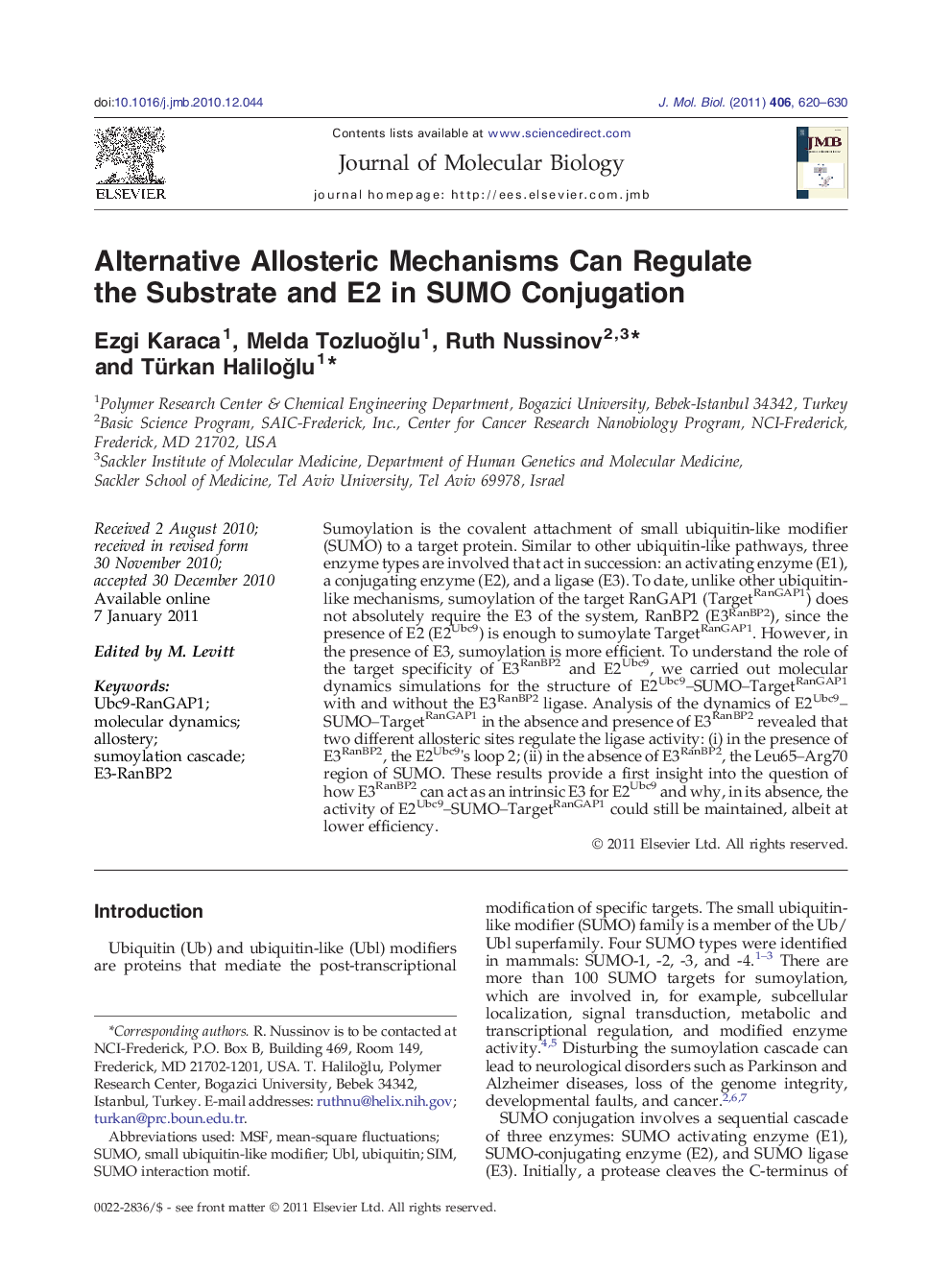| Article ID | Journal | Published Year | Pages | File Type |
|---|---|---|---|---|
| 2185708 | Journal of Molecular Biology | 2011 | 11 Pages |
Sumoylation is the covalent attachment of small ubiquitin-like modifier (SUMO) to a target protein. Similar to other ubiquitin-like pathways, three enzyme types are involved that act in succession: an activating enzyme (E1), a conjugating enzyme (E2), and a ligase (E3). To date, unlike other ubiquitin-like mechanisms, sumoylation of the target RanGAP1 (TargetRanGAP1) does not absolutely require the E3 of the system, RanBP2 (E3RanBP2), since the presence of E2 (E2Ubc9) is enough to sumoylate TargetRanGAP1. However, in the presence of E3, sumoylation is more efficient. To understand the role of the target specificity of E3RanBP2 and E2Ubc9, we carried out molecular dynamics simulations for the structure of E2Ubc9–SUMO–TargetRanGAP1 with and without the E3RanBP2 ligase. Analysis of the dynamics of E2Ubc9–SUMO–TargetRanGAP1 in the absence and presence of E3RanBP2 revealed that two different allosteric sites regulate the ligase activity: (i) in the presence of E3RanBP2, the E2Ubc9's loop 2; (ii) in the absence of E3RanBP2, the Leu65–Arg70 region of SUMO. These results provide a first insight into the question of how E3RanBP2 can act as an intrinsic E3 for E2Ubc9 and why, in its absence, the activity of E2Ubc9–SUMO–TargetRanGAP1 could still be maintained, albeit at lower efficiency.
Graphical AbstractFigure optionsDownload full-size imageDownload high-quality image (275 K)Download as PowerPoint slideResearch Highlights► Allosteric sites imply how sumoylation proceeds in the presence and absence of E3. ► In the presence of E3, allosteric effects are observed between E2's loop 2 and target. ► In the absence of E3, allostery is induced by SUMO's Leu65–Arg70 region.
